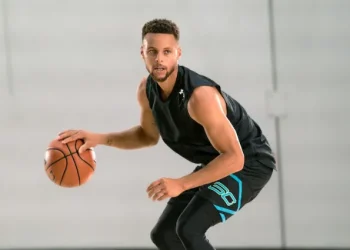Basketball is a game built on creativity, precision, and timing—and few moves capture that better than the crossover dribble. It’s the perfect blend of art and technique, allowing players to shift directions instantly, deceive defenders, and open up opportunities for scoring or passing. For anyone serious about improving their ball-handling, understanding and mastering the crossover is an absolute must.
What Makes the Crossover So Effective
At its core, the crossover is a quick switch of the ball from one hand to the other to change direction while keeping your defender guessing. When done correctly, it forces the defender off balance and gives you a clear path to the basket. It’s not just about speed; it’s about rhythm, misdirection, and control. The best crossovers leave defenders reaching for air and spectators on their feet.
The Origins and Evolution of the Move
The crossover has been part of basketball since its early streetball days, but it exploded in popularity during the 1990s. Tim Hardaway’s “UTEP Two-Step” changed how players viewed ball-handling—it was fast, tight, and unstoppable. Then came Allen Iverson, whose fearless crossover against Michael Jordan in 1997 became one of the most replayed moments in NBA history. Players like Kyrie Irving later elevated it into an art form, blending deception and finesse to create endless scoring chances.
How to Execute the Crossover
Learning the crossover starts with fundamentals. Every variation begins from a strong, low stance and tight ball control.
1. The Basic Crossover
Keep your knees bent and body balanced. As you dribble, shift your weight and quickly bounce the ball to your opposite hand while stepping in the opposite direction. Keep the ball low—below the knees—to maintain control and avoid turnovers.
2. The In-and-Out Crossover
This variation starts as a fake. Push the ball slightly toward one side as if you’re about to switch hands, then pull it back with the same hand while using your body to sell the fake. The goal is to make your defender bite on the move before you attack.
3. Between-the-Legs Crossover
This version adds protection and fluidity. Dribble the ball through your legs from one hand to the other while stepping forward with your opposite foot. It’s useful for tight defensive coverage when you need to change direction quickly.
4. Behind-the-Back Crossover
A stylish and advanced move, this involves bouncing the ball behind your back to your other hand. Rotate your hips and shoulders as the ball moves to keep your body between the defender and the ball. This move works best when changing direction at high speed.
Why Every Player Needs a Strong Crossover
A powerful crossover is more than a flashy highlight—it’s a tool for dominance.
Creating Space: It helps you break free from defenders and opens up lanes for shots or passes.
Breaking Down Defenses: By forcing defenders to overcommit, you create scoring opportunities for yourself and teammates.
Boosting Agility and Coordination: Practicing crossovers strengthens your control and responsiveness on the court.
Psychological Advantage: A clean crossover can shake a defender’s confidence and energize your entire team.
Legendary Crossovers in Basketball
Some of the sport’s most iconic moments were born from a killer crossover. Tim Hardaway’s signature move defined an era. Allen Iverson’s cross on Michael Jordan became basketball folklore. Kyrie Irving continues to redefine what ball-handling looks like, using quick footwork and effortless control to keep defenders off-balance. These players proved that when mastered, a crossover can be both beautiful and devastating.
Training to Perfect Your Crossover
Improvement comes from repetition and focus. Here’s how to train effectively:
Cone Drills: Set up cones and practice changing direction with different crossover techniques.
Two-Ball Dribbling: Dribble two balls at once to build coordination and hand speed.
Agility Drills: Ladder work, shuttle runs, and side steps improve foot speed and reaction time.
Strength Training: Squats, lunges, and planks develop lower body and core stability, helping maintain balance during quick movements.
Avoiding Common Mistakes
Even skilled players can struggle with crossovers if they overlook key details. Avoid dribbling too high, which makes steals easier. Don’t telegraph your moves—add subtle body fakes to keep defenders guessing. Most importantly, maintain control; losing the ball in transition can turn offense into an opponent’s fast break.
The Takeaway: Turning a Move into a Weapon
The crossover dribble is more than just a trick—it’s a statement of confidence and control. When practiced regularly, it becomes a natural extension of your playstyle, allowing you to dictate the pace of the game rather than reacting to it.
Mastering the crossover isn’t about mimicking someone else’s style—it’s about finding your rhythm and making the move your own. With patience, consistency, and smart training, this single skill can transform how you attack, create, and dominate on the court.












